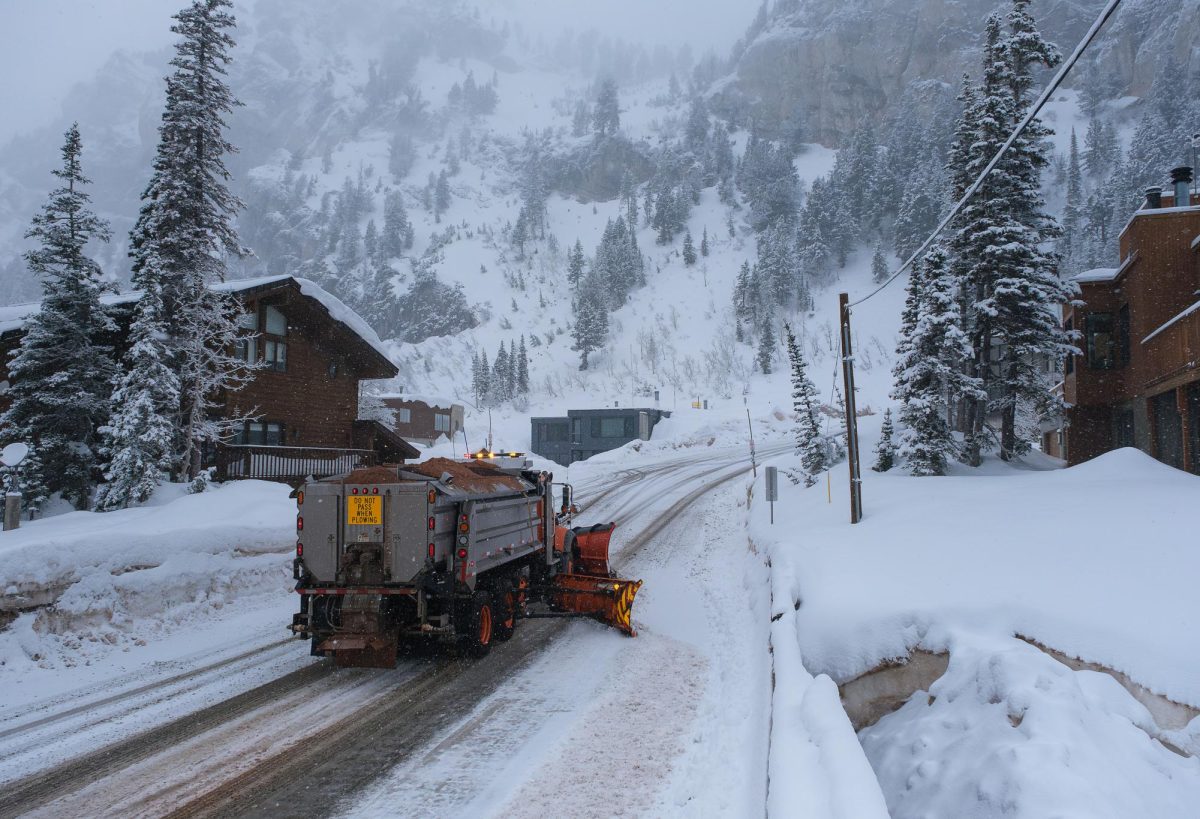On July 8, 2024, the Utah Department of Transportation began the Mt. Superior Avalanche Mitigation Project. Sixteen new Wyssen Avalanche Towers will be installed on the Mount Superior ridgeline above SR-210. Closures in Little Cottonwood Canyon are expected to last until October, UDOT says.
Safety Protocols in Little Cottonwood
“We have gone through and developed an area of closure during the actual construction phase starting on July 8,” said UDOT Avalanche Program Manager Steven Clark. “No recreational activities and no people who [aren’t] directly associated with the project will be allowed in that area. This is purely for their safety.”
Andrea Huskinson, Alta Ski Area’s communication manager, shed light on the need for avalanche mitigation in Little Cottonwood Canyon.
“With highway 210, [avalanche danger] has always been an issue. It’s a steep canyon and there are a lot of natural slide paths,” she said. “Mother nature is the one who calls all of the shots, so [UDOT does its] best to manage and mitigate it.”
Clark and Huskinson emphasized the importance of understanding that avalanche mitigation is just mitigation — it does not eliminate all avalanche danger on Mt. Superior. Brianna Binnebose, UDOT communications manager, also stressed this point. Additionally, she encouraged Little Cottonwood Canyon users to stay updated on avalanche conditions in the area.
“Stay informed to the best of your abilities because we try to give as much notice as we can,” Binnebose said. “But we always ask that folks bear with us because in any dynamic situation, we adapt and try to do our very best to share accurate information directly from the source.”
Binnebose suggested following UDOT Cottonwoods on Instagram or the UDOT Cottonwoods X page for updates on closures in Little Cottonwood. Closure maps and construction updates can be found on the project website.
Education on avalanches and avalanche safety can be found on the Utah Avalanche Center website. Additionally, for-credit and non-credit avalanche safety courses are available to students at the U. More information on these courses can be found here.
Reimagination of Avalanche Mitigation on Mt. Superior
Wyssen Avalanche Control manufactures the avalanche mitigation towers that will be installed in LCC. They describe these devices as “remote Avalanche Control Systems for preventative avalanche release.” These towers work by triggering avalanches using remote-controlled blasts. Clark said that the UDOT Avalanche crew is responsible for the operation of the Wyssen towers.
The use of Wyssen towers for avalanche mitigation is not new to Little Cottonwood.
“UDOT operates 13 Wyssen towers, quite a few of those are at Alta and Snowbird,” Clark said. “In addition, we operate 23 other individual rack placements called Gazex, which is a slightly different kind of system.”
“Historically, UDOT has used the primary types of avalanche mitigation tools, like hand-thrown explosives or something called an avalauncher,” Clark said.
He noted that UDOT has also used military artillery. They began using 105-millimeter Howitzer systems more recently, which shoot artillery across the canyon.
“There is a finite lifespan to this equipment,” he added. “Another issue with that equipment is with where the avalanche paths, the roadway and the buildings are in Little Cottonwood. We’re actually shooting over buildings with people inside them all the time.”
He explained that the inherent risk of these practices has led to advances in avalanche mitigation techniques, which is reflected in the Mt. Superior Avalanche Mitigation Project.
“We’re really focused on increasing our effectiveness and efficiency in our avalanche mitigation, as well as increasing worker safety,” Clark said. “By installing these new remote systems, we’re no longer exposing a gun crew to the noise and health impacts or the risk of firing the artillery.”
Crews will be working up to seven days a week to remove loose rock and soil, add safety features and begin the installation process. UDOT expects the towers to be completed and operational for the 2024-2025 winter season.




